ASKO T408HD.W, W4086C.WT408HD.W User Manual
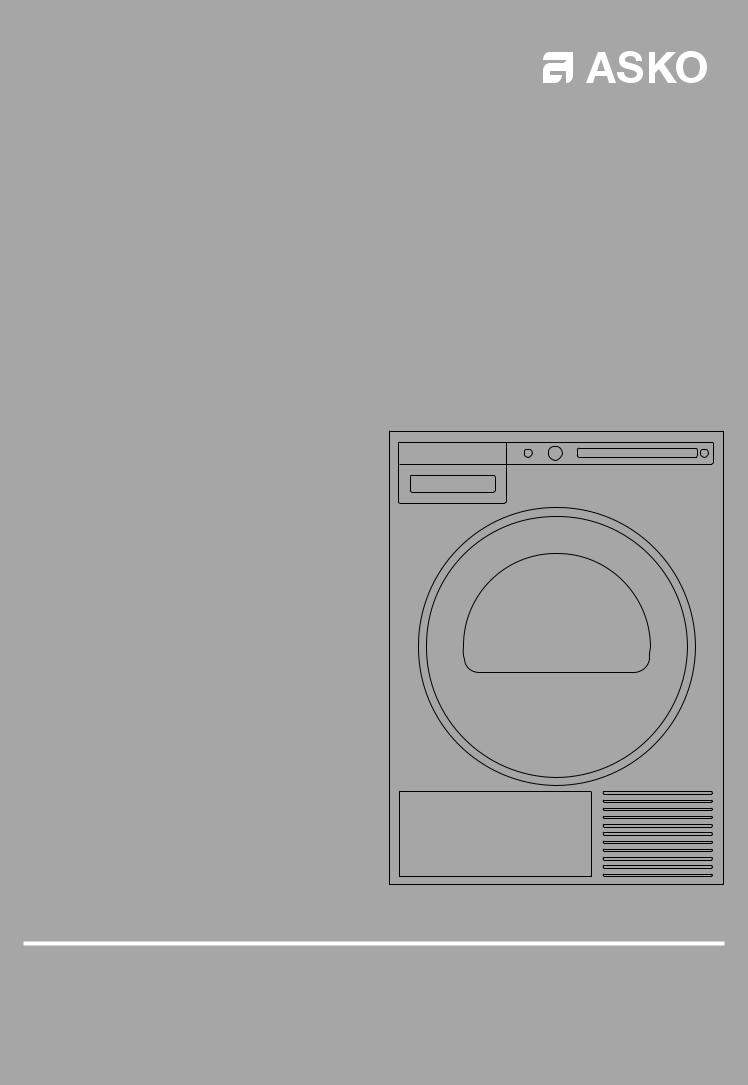
INSTRUCTIONS FOR USE |
Tumble dryer |
TD75.13 |
T408HD.W.AU |
|
Carefully read the instructions for use before using the dryer.
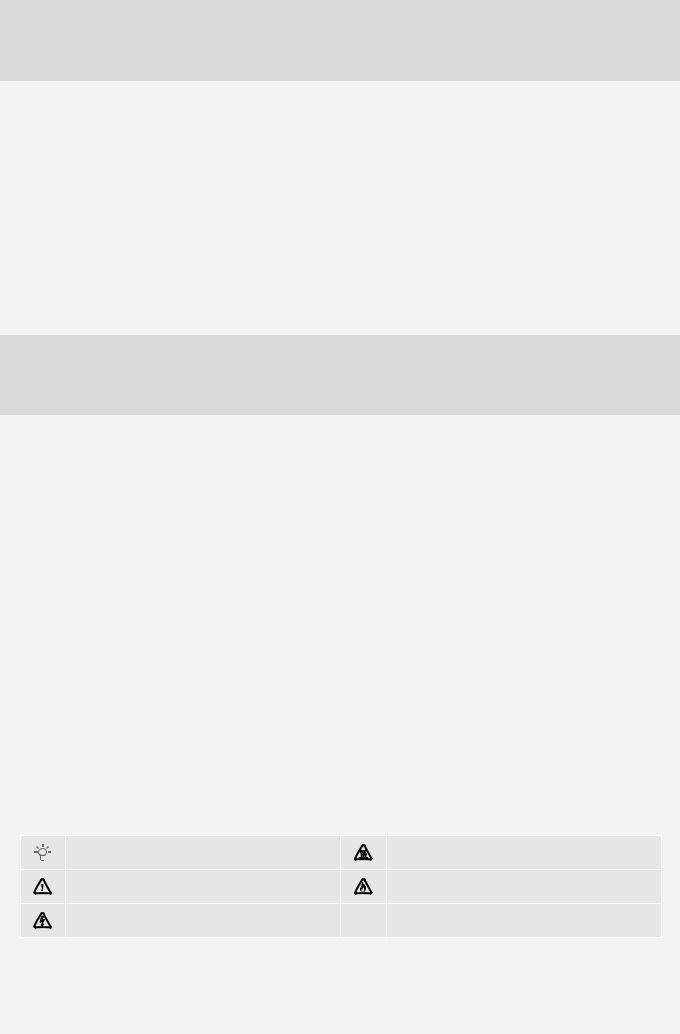
Dear Customer,
We thank you for purchasing this quality ASKO product.
We hope it meets all your expectations. Scandinavian design combines pure lines, everyday functionality, and high quality. These are the key characteristics of all our products, and the reason why they are highly appreciated across the globe.
We kindly recommend you to read these instructions before using the appliance for the first time. The instruction manual also includes information on how you can help protect the environment.
TABLE OF CONTENTS
Safety precautions |
3 |
Dryer description |
7 |
Before using the appliance for the first time |
8 |
Installation and connection |
9 |
Tips before drying |
16 |
Drying process, step by step (1 – 7) |
18 |
System settings |
26 |
Cleaning and maintenance |
29 |
Errors – what to do? |
35 |
Servicing |
38 |
Program table |
40 |
Disposal |
41 |
Quick guide |
43 |
The following symbols are used throughout the manual and they have the following meanings:
Information, advice, tip, or recommendation |
Warning – danger of hot surface |
Warning – general danger |
Warning – danger of fire |
Warning – danger of electric shock |
|
Original instructions |
See Quick guide on the last page. |
2

SAFETY PRECAUTIONS
GENERAL
 Please read the instruction manual and save it for future reference.
Please read the instruction manual and save it for future reference.
•Please do not use the tumble dryer if you have not read and understood these instructions or use first.
•Failure to observe the instructions for use or inappropriate use of the tumble dryer may result in damage to the laundry or appliance, or injury to the user.
•Instructions for use are available on our website at www.asko.com.
•Your dryer is intended solely for household use.
•Before connecting the dryer to the power mains, please read carefully the instructions for use that describe the dryer and its correct and safe use. The instructions apply to several appliance types or models; thus, settings or equipment may be described herein which is not available in your dryer.
•Leave any repairs and similar tasks on the dryer to an expert. Unprofessional repair may result in an accident or major malfunction.
•After installation, the dryer should stand still for two hours before it is connected to the power mains.
•At least two persons are required to install the tumble dryer on top of a washing machine.
•The dryer may not be connected to the power mains using an extension cord.
•Do not connect the tumble dryer to an electrical outlet intended for an electric shaver or hair dryer.
• If the power cord is damaged, it has to be replaced by the manufacturer, an authorized service technician, or a similarly qualified person, in order to avoid any hazards.
If the power cord is damaged, it has to be replaced by the manufacturer, an authorized service technician, or a similarly qualified person, in order to avoid any hazards.
• The appliance must not be supplied through an external switching device, such as a timer, or connected to a circuit that is regularly switched on and o by a utility.
The appliance must not be supplied through an external switching device, such as a timer, or connected to a circuit that is regularly switched on and o by a utility.
•After the drying process, unplug the dryer power cord from the power outlet.
•In case of incorrect appliance connection, incorrect use, or servicing by an unauthorized person, the user shall bear the cost of any damage.
•Air in the dryer environment should not contain dust particles.
The air where the dryer is installed should be thoroughly ventilated to prevent reverse flow of gases released from the gas appliances with open fire (e.g. fireplaces).
•Do not evacuate the air from the dryer through channels used for appliances or devices that use natural gas or other fuels for their operation (only applies to the evacuation dryer).
3

•Do not dry unwashed laundry in the dryer.
•Laundry stained with oil, acetone, alcohol, oil derivatives, stain removers, turpentine, wax, and wax removers should be washed in a washing machine with hot water and detergent before it is dried in the dryer.
•Clothing that includes latex, rubber parts, shower and bathing caps, and laundry or covers with rubber foam may not be dried in the dryer.
•Use laundry conditioners or similar products in compliance with manufacturer's instructions.
•Do not place the dryer behind lockable or sliding door, or door with a hinge on the opposite side of the dryer door hinge. Install the dryer in such way that the door can always be freely opened.
•Never block the air exhaust (evacuation opening).
•Do not place the dryer on a carpet with long fibres as this may impede air circulation.
•The air in the room where the dryer is installed may not contain dust particles.
•Make sure the fibres do not accumulate around the dryer.
• Remove all objects such as lighters and matches from the pockets.
Remove all objects such as lighters and matches from the pockets.
•After installation, wait for 24 hours before using the appliance. If the dryer has to be laid down on one of the sides during transport or servicing, place it with its left side, viewing from the appliance front, downwards (only applies to dryers with a heat pump).
•The appliance may not be in contact with a wall or adjacent furniture.
•If the dryer is connected to an air exhaust system already used for another appliance, a non-return valve must be installed. Reverse flow into the dryer could damage the appliance, and the non-return valve prevents such reverse flow (only applies to condenser dryers and dryers with a heat pump).
•A float will switch o the appliance if the condensed water pipe is clogged or if there is a risk of overflowing of the condensed water accumulated in the condensed water tank (only applies to condenser dryers and dryers with a heat pump).
•If you wish to move the dryer or store it in a non-heated room during winter, it is essential that you first empty the condensed water tank (only applies to the condenser dryers and dryers with a heat pump).
•Maximum drying capacity in kg (for the Cotton program) is indicated on the rating plate.
4

SAFETY
• Only use the dryer to dry laundry that was washed with water. Do not dry any laundry that was washed or cleaned with flammable cleaners or substances (such as gasoline, trichloroethylene etc.) as this may result in an explosion.
Only use the dryer to dry laundry that was washed with water. Do not dry any laundry that was washed or cleaned with flammable cleaners or substances (such as gasoline, trichloroethylene etc.) as this may result in an explosion.
•If you have cleaned your clothes with industrial cleaners or chemical substances, do not dry them in the dryer.
•The air exhaust hose may not be connected to an active chimney used to evacuate smoke or waste gases; into a shaft intended for ventilating rooms with combustion equipment; or into a chimney used by third parties. If smoke or waste gases return to the room where the dryer is installed, there is a danger of poisoning (only applies to evacuation dryer).
•The dryer is protected with an automatic switch-o system in case of overheating. The system switches o the dryer immediately if the
temperature is too high (only applies to evacuation and condenser dryer).
•The overheating automatic switch-o system may activate if the net filter is clogged. Clean the filter, wait for the machine to cool down, and try running it again. If the machine still fails to switch on, call a service technician (only applies to the evacuation and condenser dryer).
• WARNING! The back of the dryer may get very hot during operation. Wait for the dryer to cool down completely before touching its back side.
WARNING! The back of the dryer may get very hot during operation. Wait for the dryer to cool down completely before touching its back side.
• If you open the dryer door during the drying process, the clothes may be very hot and there is a risk of burns.
If you open the dryer door during the drying process, the clothes may be very hot and there is a risk of burns.
• Never stop the drying cycle before it is completed; if you do interrupt the cycle for any reason, be careful when removing the laundry from the drum as it is very hot. Quickly remove the laundry from the drum and spread it to allow it to cool down as quickly as possible.
Never stop the drying cycle before it is completed; if you do interrupt the cycle for any reason, be careful when removing the laundry from the drum as it is very hot. Quickly remove the laundry from the drum and spread it to allow it to cool down as quickly as possible.
CHILD SAFETY
•Do not allow the children to play with the dryer.
•Prevent your children and pets to enter the dryer drum.
•Before closing the dryer door and running the program, make sure there is nothing except laundry in the drum (e.g. if a child climbed into the dryer drum and closed the door from the inside).
•Activate the child lock.
See chapter "SYSTEM SETTINGS", section Child Lock.
•Do not let children younger than three years to come near the dryer, unless they are under constant supervision.
5

•The dryer is made in compliance with all relevant safety standards. This dryer may be used by children aged 8 years and above and by persons with reduced physical, sensory or mental capabilities or lack of experience and knowledge, but only if they are supervised during the use of the appliance, if they have been provided relevant instructions regarding safe use of the dryer, and if they understand the hazards of inappropriate use. Make sure children do not play with the appliance. Make sure the children do not clean the dryer or perform any maintenance tasks without supervision.
SAVE THESE INSTRUCTIONS FOR FUTURE REFERENCE!
6
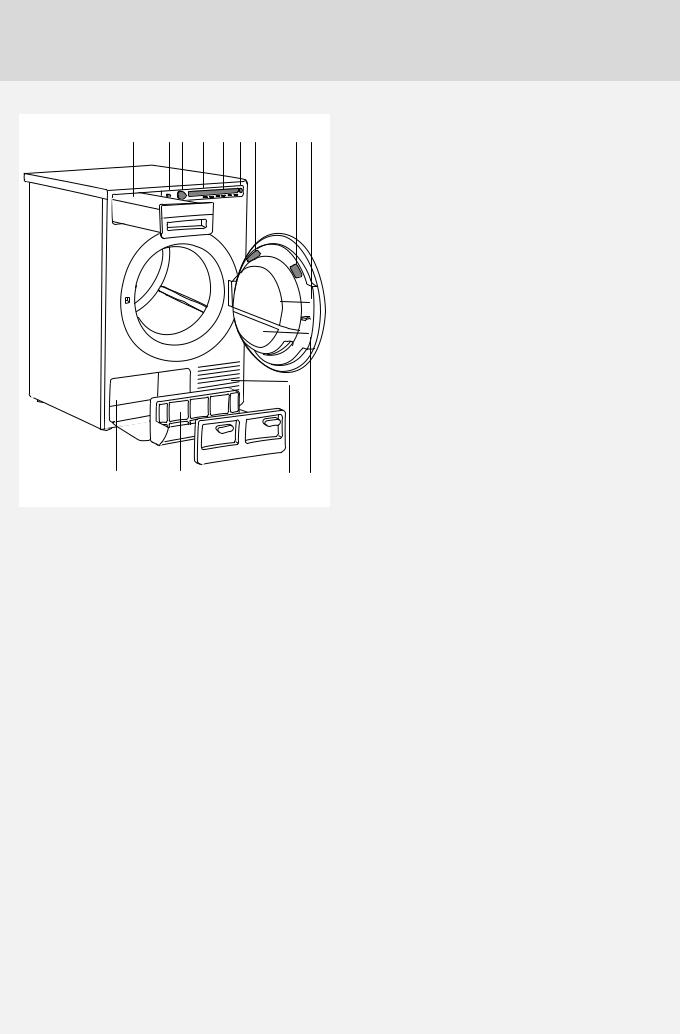
DRYER DESCRIPTION
10 |
1 2 |
3 |
4 |
5 |
6 |
7 |
8 |
11 |
12 |
13 |
9 |
1.Main switch (ON/OFF)
2.Program selector knob
3.Display unit
4.Program selector buttons
5.Button (start/pause/stop)
6.Rating plate with information about the dryer (on the inside of the drying machine door)
7.QR and AUID code (on the inside of the drying machine door)
8.Dryer door
9.Net filter
10.Condensate tank (depending on the model)
11.Heat pump
12.Heat pump filter
13.Air vents or opening
7
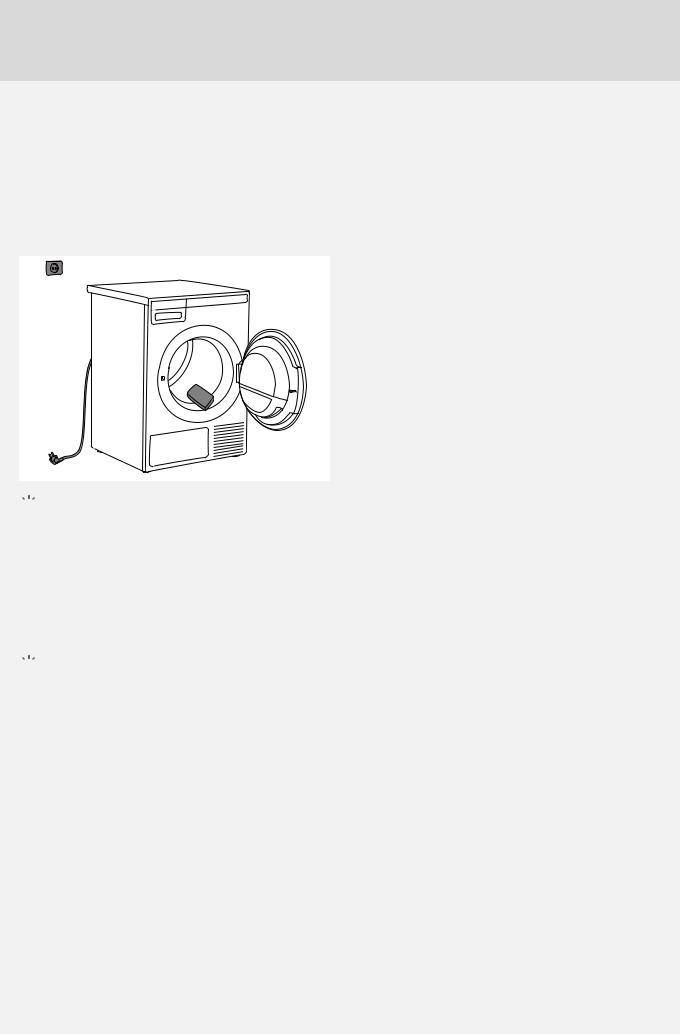
BEFORE USING THE APPLIANCE FOR THE FIRST TIME
PACKAGING
Remove all packaging.
Please sort the materials in compliance with local recommendations (see chapter "DISPOSAL").
CLEANING
Disconnect the dryer from the power mains and open the door towards you. Clean the dryer drum with a damp cloth and a mild detergent.

 No program can be started while the door is open.
No program can be started while the door is open.
CHOOSING THE LANGUAGE
When the dryer is connected (see chapter "INSTALLATION AND CONNECTION") and switched on for the first time, choose the preferred language:
1.Press the button 2 or the program selector button to scroll the list of languages. Confirm your selection by pressing the OK button.
2.Press the "Finalize" button to confirm your selection.

 When you run the dryer for the first time, or if the dryer has been out of use for a long time, slight hitting noise may appear. This is normal and it will disappear after a few drying cycles.
When you run the dryer for the first time, or if the dryer has been out of use for a long time, slight hitting noise may appear. This is normal and it will disappear after a few drying cycles.
8
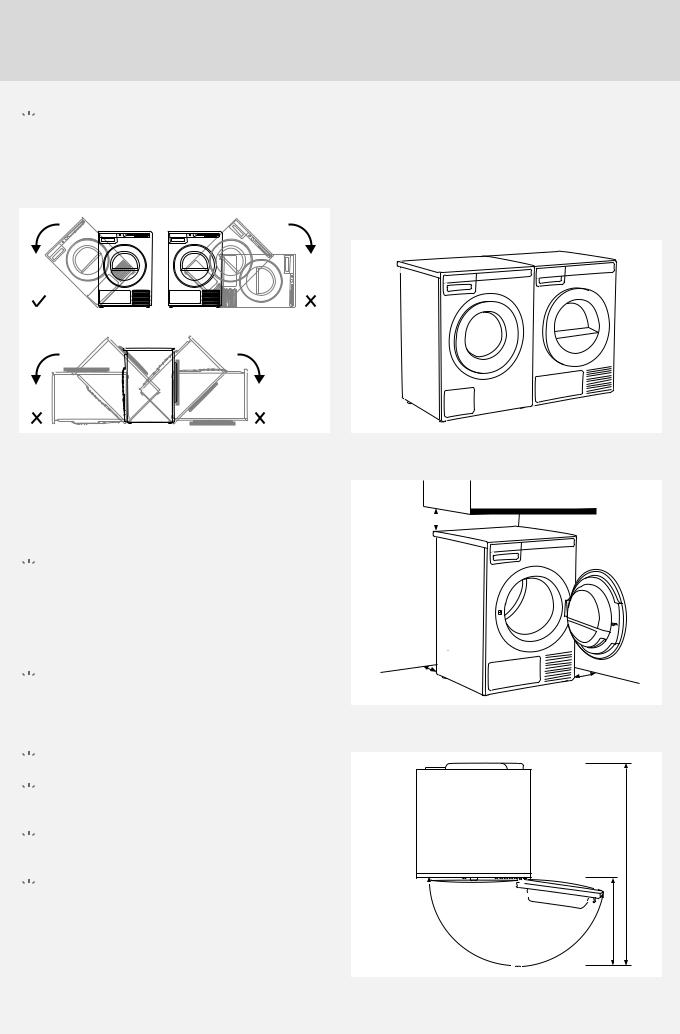
INSTALLATION AND CONNECTION

 After installation, wait for 24 hours without moving the appliance before using it for the first time. If the dryer has to be laid down on one of the sides during transport or servicing, place it with its left side, viewing from the appliance front, downwards.
After installation, wait for 24 hours without moving the appliance before using it for the first time. If the dryer has to be laid down on one of the sides during transport or servicing, place it with its left side, viewing from the appliance front, downwards.
90° |
90° |
90° |
90° |
Free-standing appliance
The dryer may be placed adjacent to a washing machine.
If the friction between the dryer feet and the floor is not su cient, the dryer may move during operation. To prevent the dryer from sliding around, use a non-slip support or pad.
DRYER PLACEMENT
The dryer can be either free standing or installed onto a washing machine.
The dryer emits heat. Therefore, do not place it in a very small room, as the drying process may be longer due to limited amount of available air.

 Do not place the dryer in a room where temperature can drop below 0 °C, as the machine may not operate correctly at such low temperatures or freeze with damages as consequences.
Do not place the dryer in a room where temperature can drop below 0 °C, as the machine may not operate correctly at such low temperatures or freeze with damages as consequences.
Install the dryer in a room with adequate ventilation and a temperature between 15 °C and 25 °C.

 Do not place the dryer behind lockable or sliding door, or door with a hinge on the opposite side of the dryer door hinge. Install the dryer in such way that the door can always be freely opened.
Do not place the dryer behind lockable or sliding door, or door with a hinge on the opposite side of the dryer door hinge. Install the dryer in such way that the door can always be freely opened.

 Never block the air exhaust (evacuation opening).
Never block the air exhaust (evacuation opening).

 At least two persons are required to install the tumble dryer on top of a washing machine.
At least two persons are required to install the tumble dryer on top of a washing machine.

 Do not place the dryer on a carpet with long fibres as this may impede air circulation.
Do not place the dryer on a carpet with long fibres as this may impede air circulation.

 The appliance may not be in contact with a wall or adjacent furniture. For optimum operation of the drying machine, it is recommended to consider the deviation from the wall, as shown in picture.
The appliance may not be in contact with a wall or adjacent furniture. For optimum operation of the drying machine, it is recommended to consider the deviation from the wall, as shown in picture.
Deviations of the dryer
100 mm 
50 mm
100 mm
Opening the door of the dryer (top view).
480 mm |
1074 mm |
176°
9
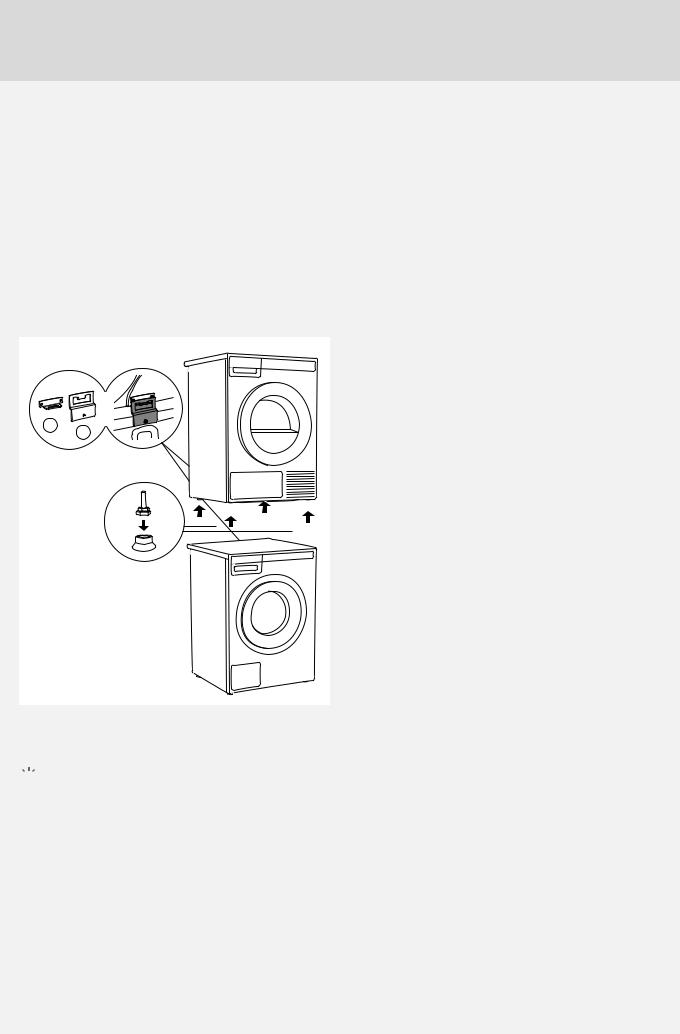
Stacking on top of a washing machine
To stack the dryer on top of a washing machine, use the extra vacuum feet and the tipping guard (A+B), supplied in the cardboard box in the dryer drum. Tipping gurad part B is designed to fit on ASKO washing machines and might be hard or imposible to mount on other brands. If the washing machine and dryer are not of matching dimensions or if you have installed a hidden helper between the two appliances, then binding plates are available as optional accessories at the service unit (available only for HH and TD75 on top of WM80 or WM85, not for general appliances with deviating dimensions).
A
B
All ASKO washing machines will bear the weight of the dryer.

 Washing machine on which you wish to install the dryer must be able to bear the weight of the dryer (see washing machine’s rating plate or technical information).
Washing machine on which you wish to install the dryer must be able to bear the weight of the dryer (see washing machine’s rating plate or technical information).
10
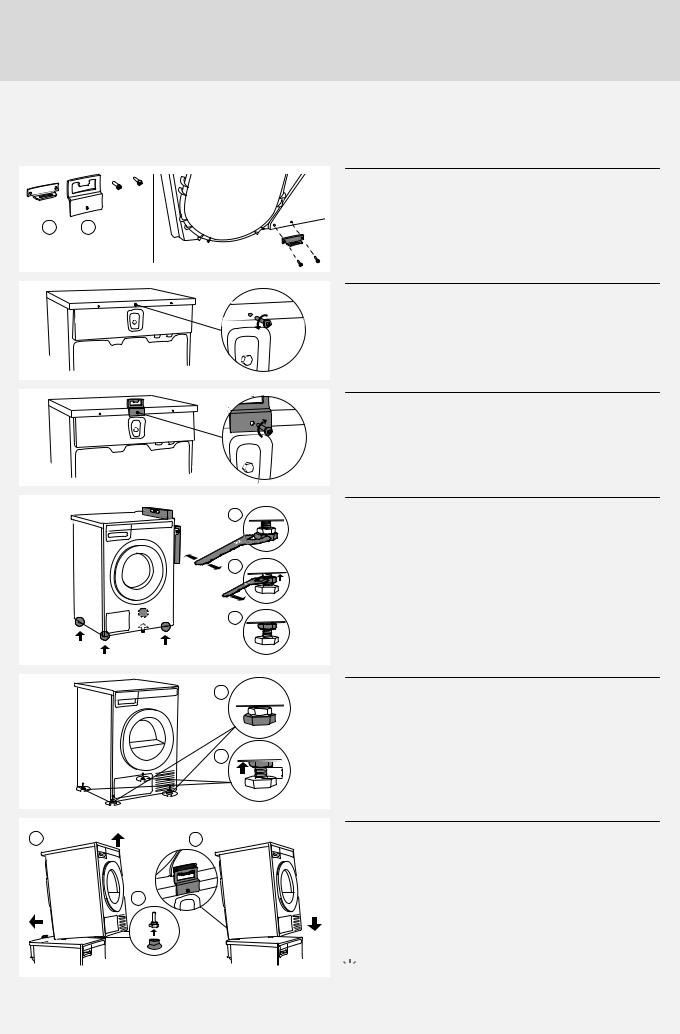
How to stack a dryer onto the washing machine (ASKO):
There is a cardboard box in the dryer drum, containing the vacuum feet and the tipping guard.
A B
1
2
3
1 The tipping guard consists of two metal parts (A + B).
Use two screws to attach the A part to the back of the dryer.
2 Undo the screw on the back side of the washing machine.
3 Use the screw to attach the tipping guard (B part) to the back of the washing machine.
4 Level the washing machine so that it is stable.
1.Level the washing machine in longitudinal and traverse direction by rotating the adjustable feet using a No. 32 spanner.
The feet allow levelling by +/- 1 cm.
2.After adjusting the height of the feet, firmly tighten the jam nuts (counter nuts) using a
spanner No 17, by turning them towards the bottom of the washing machine  .
.
3.Tighten the jam nuts (counter nuts).
1
2
5 mm
1 |
3 |
2
5 Set the dryer feet:
1.Tighten the front two feet all the way it in inner position.
2.Undo the back feet by 3.5 turns or 5 mm; then,
fasten the jam nuts towards the bottom of the appliance  .
.
6 Place the dryer onto the washing machine:
1.Lift the front part of the dryer by 5 to 10 cm.
2.Attach the vacuum feet onto the front feet of the dryer.
3.Push the dryer into the tipping guard (so that the B part is inserted into the A part) and release it (see the picture on previous page as well).

 Make sure the tipping guard is "locked"!
Make sure the tipping guard is "locked"!
11
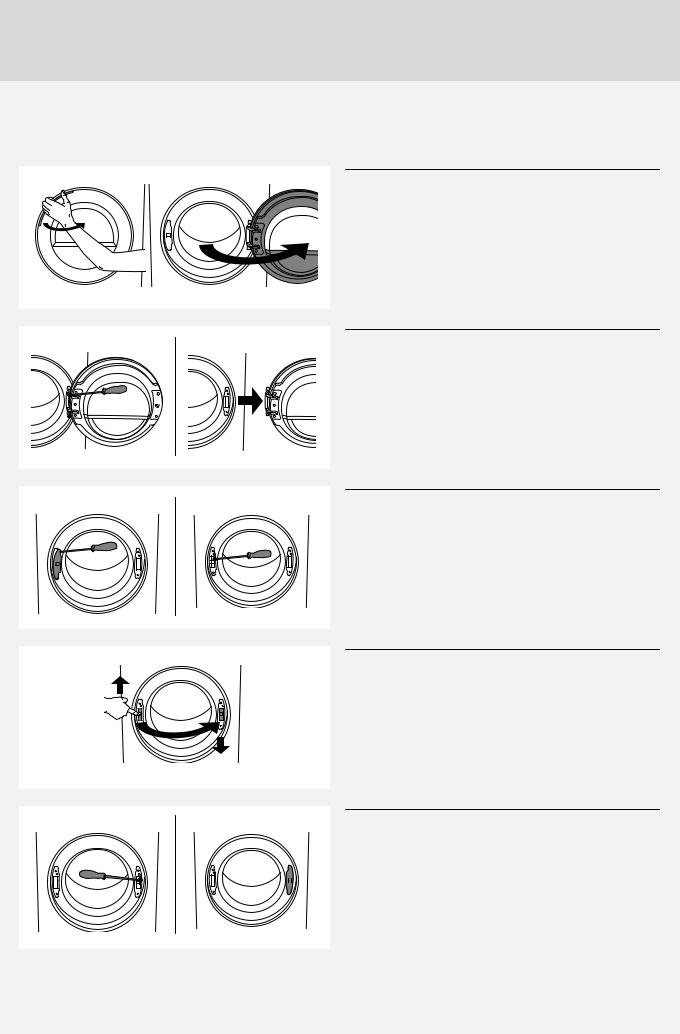
CHANGING THE DOOR OPENING DIRECTION
To change the direction of door opening, proceed as follows.
1 Open the door fully.
2 Undo the screws and remove the door.
3 Use the screwdriver to remove the door lock cover and undo the screw on the door lock.
4 Push the door lock upwards and remove it. Move it to the other side and push it downwards.
5 Fasten the screw on the door lock. Replace the door lock cover.
12
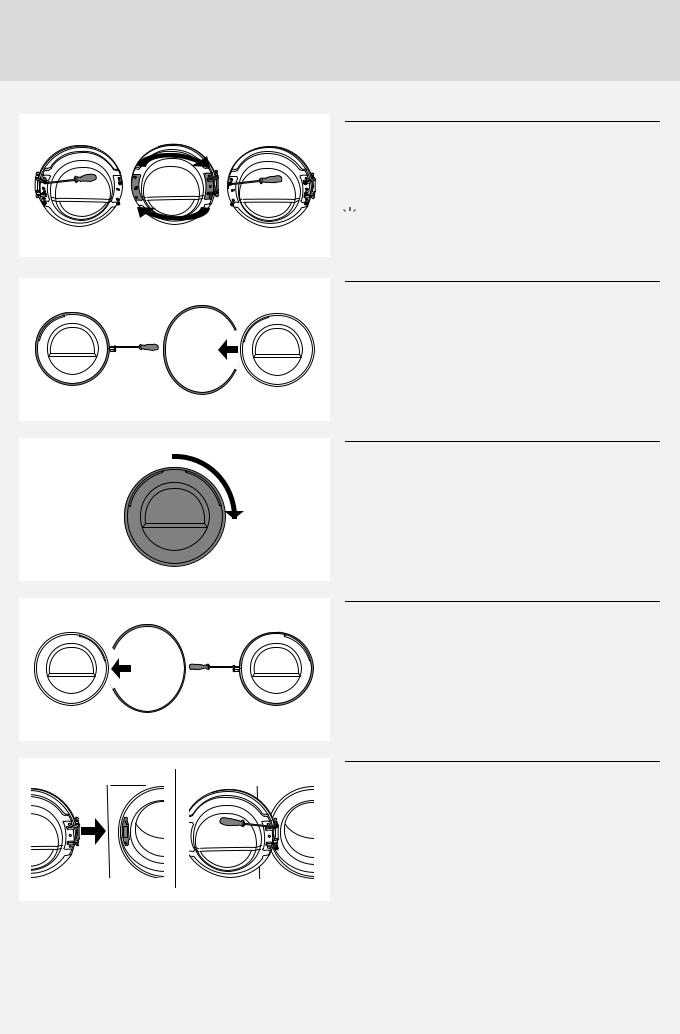
6 Undo the door hinge assembly (left) and the door latch assembly (right), switch their positions, and replace the screws (door hinge assembly to the righthand side, door latch assembly to the left-hand side).

 Use the screwdriver to remove the plastic part more easily.
Use the screwdriver to remove the plastic part more easily.
7 Undo the door ring and remove it temporarily.
8 Rotate the door glass cover by 90°so that the sign indicating the opening of the door is on the other
side.
9 Rotate the door ring by 180°, install it onto the door, and fasten it with screws.
10 Replace the door on the door hinge and fasten the screws.
13
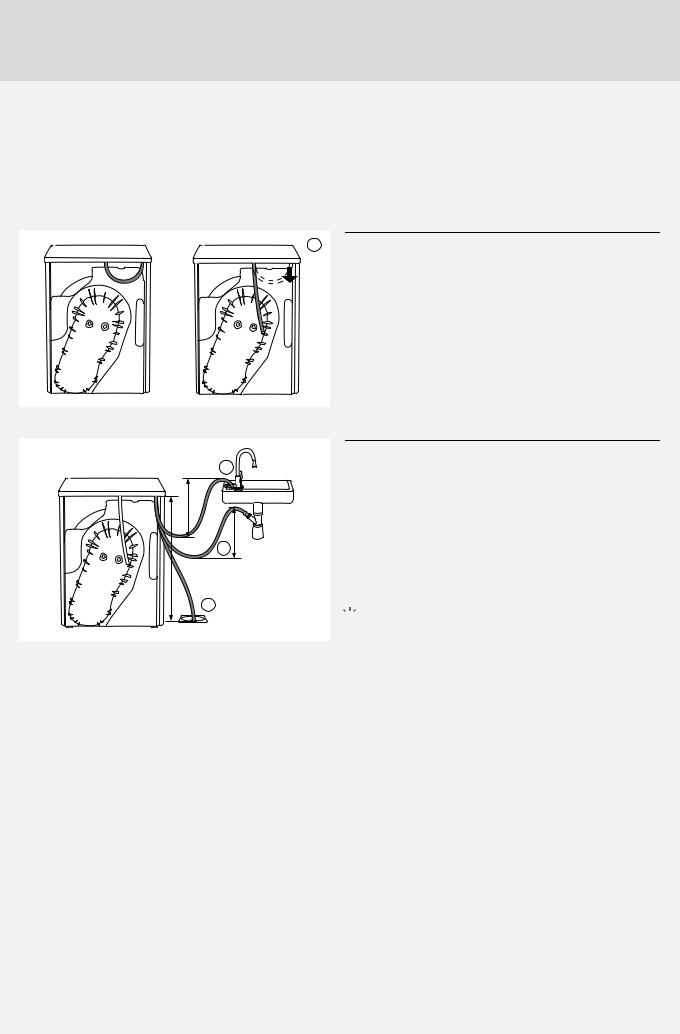
DRAINING THE CONDENSATE
The moisture from the laundry is extracted in the condenser unit and accumulated in the condensate tank. Condensate tank has to be emptied regularly (see chapter "CLEANING AND MAINTENANCE").
Interruption of the drying cycle due to full condensate tank can be avoided by running the condensate discharge hose found at the back of the appliance directly into a drain.
max 1000 mm
|
B |
max 300 mm |
mm |
|
C max300 |
D
A |
1 |
Remove the small short hose from the attachment |
|
(A). |
2 Connect the supplied drain hose to the same attachment (A).
Run the condensate drain hose into a drain. Tie the hose onto a tap (B) so that it cannot slip during use. The drain hose can also be fed into the washbasin siphon (C) or directly into the floor drain (D).
Then, the water is pumped directly into a washbasin, a siphon, or a floor drain.

 Do not pull the drain hose, and make sure it is not under tension, clamped, or bent.
Do not pull the drain hose, and make sure it is not under tension, clamped, or bent.
 If you decide to run the condensate drain hose into a drain, siphon, or washbasin, make sure the hose is securely fastened. This will prevent any water spillage which could result in unexpected damage.
If you decide to run the condensate drain hose into a drain, siphon, or washbasin, make sure the hose is securely fastened. This will prevent any water spillage which could result in unexpected damage.
 Always use hoses that are attached to the appliance.
Always use hoses that are attached to the appliance.
 If the dryer is connected to an air exhaust system already used for another appliance, a non-return valve must be installed. Return flow into the dryer could damage the appliance and the non-return valve prevents such flow.
If the dryer is connected to an air exhaust system already used for another appliance, a non-return valve must be installed. Return flow into the dryer could damage the appliance and the non-return valve prevents such flow.
14
